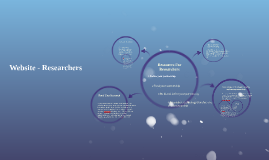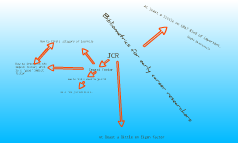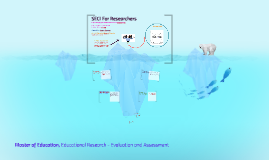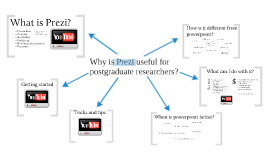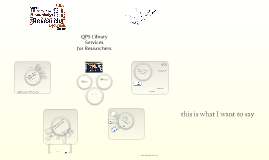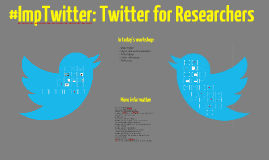SECI FOR RESEARCHERS
Transcript: Data A meeting in my organisation Explicit knowledge is knowledge that can be expressed and communicated explicitly. It can be transferred and stored easily by any means such as: Externalization (Tacit to Explicit) References Bergeron, B. (2003). Essentials of knowledge management (Vol. 28). John Wiley & Sons. Dalkir, K. (2013). Knowledge management in theory and practice. Routledge. Dubberly, H., & Evenson, S. (2011). Design as learning---or knowledge creation---the SECI model. interactions, 18(1), 75-79. Easa, N. F. (2012). Knowledge management and the SECI model: a study of innovation in the Egyptian banking sector. Ellis, N. C. (2008). Implicit and explicit knowledge about language. In Encyclopedia of language and education Springer US, 1878-1890. Gourlay, S. (2003). The SECI model of knowledge creation: Some empirical shortcomings, 377-385 Nonaka, I. & Konno, N. (1998). The concept of "ba": Building a foundation for knowledge creation California Management Review 40(3), 40-54. Topic: Managing Knowledge Management in Organisations Topic coordinator: Michael Bell Teacher: Melinda Thambi Presented by: Thongsy Xuamolee School of Education, Flinders University. Academic Year 2015 Explicit Knowledge Tacit knowledge has three key features: 1." It typically is acquires implicitly; that is by experience or observation. 2. It tends to be procedure knowledge that guides behaviour. i.e. Knowing how rather than knowing what. 3. It is knowledge that has a direct practical outcomes for the person acquiring it". It can not be described in "context-independent terms" as it is in individuals' mental(Jennex, 2007, p, 287). It also hepls researchers to design new explicit knowledge in the field in the right direction. (Dubberly & Evenson, 2011) There is no certain definition of KM. Thus, Each organisation needs to define KM in terms of its own objectives and concept analysis to achieve sustainable development effectively (Bergeron, 2003). Documents/information Internationalisation (Explicit to Tacit) Combination (Explicit to Explicit) SECI For Researchers 95% The model describes knowledge creation as a "spiral process of interactions between Tacit knowledge and Explicit knowledge" (Nonaka and Konno, 1998). In this stage, tacit knowledge is transferred into explicit knowledge to make it understandable and interpretable. It is done through recording information, writing notes, brainstorming. A learning environment is encouraged to create in this stage. Otherwise, knowledge can be lost if employees leave. In 1994, SECI Model was introduced by NONAKA and his colleagues in order to help organisations to define knowledge as their expectation and visions. Basically, KM is "the process of applying a systematic approach to the capture, structure, management, and dissemination of knowledge throughout an organisation in order to work faster, reuse best practices, and reduce costly rework from project to project" (Monaka & Takeuchi, 1995; Pasternack & Visco, 1998; Pfeiffer & Sutton, 1999; Ruggles & Holtshouse, 1999 as cited in Dalkir, 2005, p, 18). Socialization (Tacit to Tacit) KM is very important to support the organisation and the decision making process. Thus, the leaders held a meeting for the employees to share experiences to create new knowledge. However, after each meeting, they do not record any information into books, computers or documents. Thus, there is no new explicit knowledge that is created in my organisation. I personally hope to apply this concept to create new knowledge in my organisation after I go back. In my organisation, 5% Why is SECI model significant for researchers to apply to create knowledge? Tacit Knowledge Knowledge management (KM) In this stage, the new explicit knowledge needs to be shared, practiced and repeated among employees through action and reflection in order to create know how It is the stage where new explicit knowledge is analysed and organised into a broader concept of systems such as databases, books, training. The SECI model Devices/tools In this stage, employees convert new tacit knowledge through social interaction and shared experiences. The organisation should significantly has open space - no physical barriers for the employees. However, Gourly (2004) points out that the stages of "Combination" and "Internalisation" are not clearly described, and there is no convincing example for researchers. Thus, it still needs another model - "Ba" to guide them to create new knowledge (pp, 383). Master of Education, Educational Research - Evaluation and Assessment It helps researchers to create new knowledge that fits the objectives and vision of the organisation. (Dubberly & Evenson, 2011)






